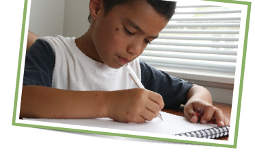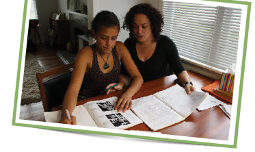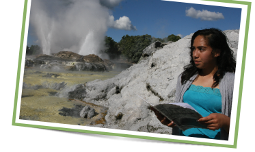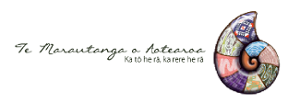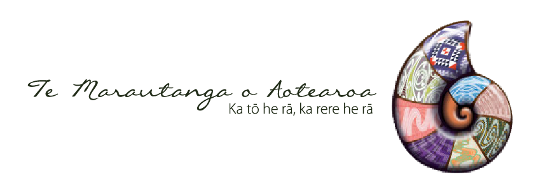Ko te tuku iho o te reo te tino aronga mai mō te oranga tonutanga o te reo Māori. Koirā te take e titiro ana ki te mahi o ngā kura. I tēnei wā ka aro atu te nuinga o ngā whānau ki ngā kura, mā ngā kura e ora atu ai te reo Māori ki waenga i ngā tamariki, mā ngā tamariki e kawe atu ai te reo ki tōna oranga. Ko te āwangawanga o tērā whakaaro, he nui anō ngā wā ka kuhu ngā tamariki ki roto i te kura engari ko te reo i te kāinga ko te reo Pākehā. Nō reira ko te reo i whakatipuria atu ai ēnei reanga ko te reo Pākehā. Engari i te haerenga atu ki te kura ki reira e whāngai ana ki te tangata. Ahakoa pakari nei te reo o te tangata a muri mai i te rima tau, waru tau, aha rānei e pēhea te roa i roto i taua kura, ka tae noa te wā ka whai tamariki tonu ēnei tauira, ā, pakeke noa, whai tamariki ka hoki anō rātou ki tērā reo i whakatipuria ai rātou, arā, ko te reo Pākehā. I te mea koirā kē te reo taunga ana ki a rātou, te reo whakawhiti ki te pēpē, te reo whakawhiti i waenga i ngā tamariki. Ko te mea nui nei i roto i ngā hapori ko te akiaki i ngā whānau ki te kōrero i te reo Māori ki ngā tamariki i te wā e pēpē tonu ana. Kāore e kore pakeke noa ngā tamariki, ka pērā anō te mahi o aua tamariki ki ā rātou uri whai muri i a rātou. Nō reira ko te oranga tonutanga o te reo Māori ka kite i roto i tērā tuku ihotanga o te reo mai i ngā mātua ki ngā tamariki. Ehara i te mea ka kitea i roto i ngā kura. Ka haere mai ki ngā kura, engari ka mutu te kura ... kei hea te reo Māori ki ngā whānau? Ko te akiaki nui me pēhea e uru atu ai ngā whānau ki roto i ngā mahi o te kura. Mōhio ana he nui ngā tauira o ngā kura e pērā ana, e akiaki ana kia mahi tahi me ngā whānau, kia kōrero Māori, kia rūmaki nei, ngā whānau katoa i te taha o ngā tamariki i te kura. Engari he reanga anō ... ko wai ka mōhio he aha tērā reo e kōrerotia ana ki ngā mokopuna whai muri i ērā i te kura.
Mōku ake nei i a au e whai i te reo Māori - he pono nei ēnei kōrero - i tīmata taku reo Māori i te kura. Nō reira, hāunga anō aku haerenga ki te hāhi, aku mahi i roto i te Katorika nei he miha reo Māori, hāunga anō ērā engari ko te ako i te reo Māori e ako ā-marautanga. Ka mutu tērā ka haere ki te Whare Wānanga, he tohu anō tērā whai muri. He kaha anō ki te whai ētahi tohu whai muri i te Whare Wananga. Engari i tōna mutunga ko te reo i roto i a au ko te ngākaunui, ko te kaingākau ki te reo Māori i roto i au, i kitea kētia i roto i te hapori. I kitea i runga i te hiakai o ōku whanaunga o roto o Taranaki nei te kaha anō o te hiahia o ngā whānau kia kitea te tangata e tū ki te marae o te tangata tuhi kōrero, te waiata i ngā waiata, ēnei tikanga katoa, ngā tikanga katoa o roto o te ao o Taranaki. I te hiahiatia nei kia kawea i roto i te reo o Taranaki.
Koirā te mea wero mai ki a au. I mua atu i tērā ko taku whāinga he hauora kē te ia o aku mahi. Nō te rongotanga ā-ngākau nei ki tērā hiahia, tērā mate nui i roto i taku iwi ki te reo Māori he noho pōhara nei i roto i ngā mahi ā-iwi kātahi ka huri te kei o taku waka, ka huri te ia, te hau kia whai i a hau kē. Ana nō te piringa ki te hapori e kōrero Māori ana e rumaki ana ki te reo Māori, kua ora te reo i roto i au. Otirā ki aku tamariki. Me tōku pono nei ki aku mokopuna a tōna wā. Engari i tēnei wā, ko te mea i wero mai ki au he rerekē i te mea e wero mai ki aku tamariki nā te mea i tipu tahi anō ko rāua i roto i te reo Māori.
